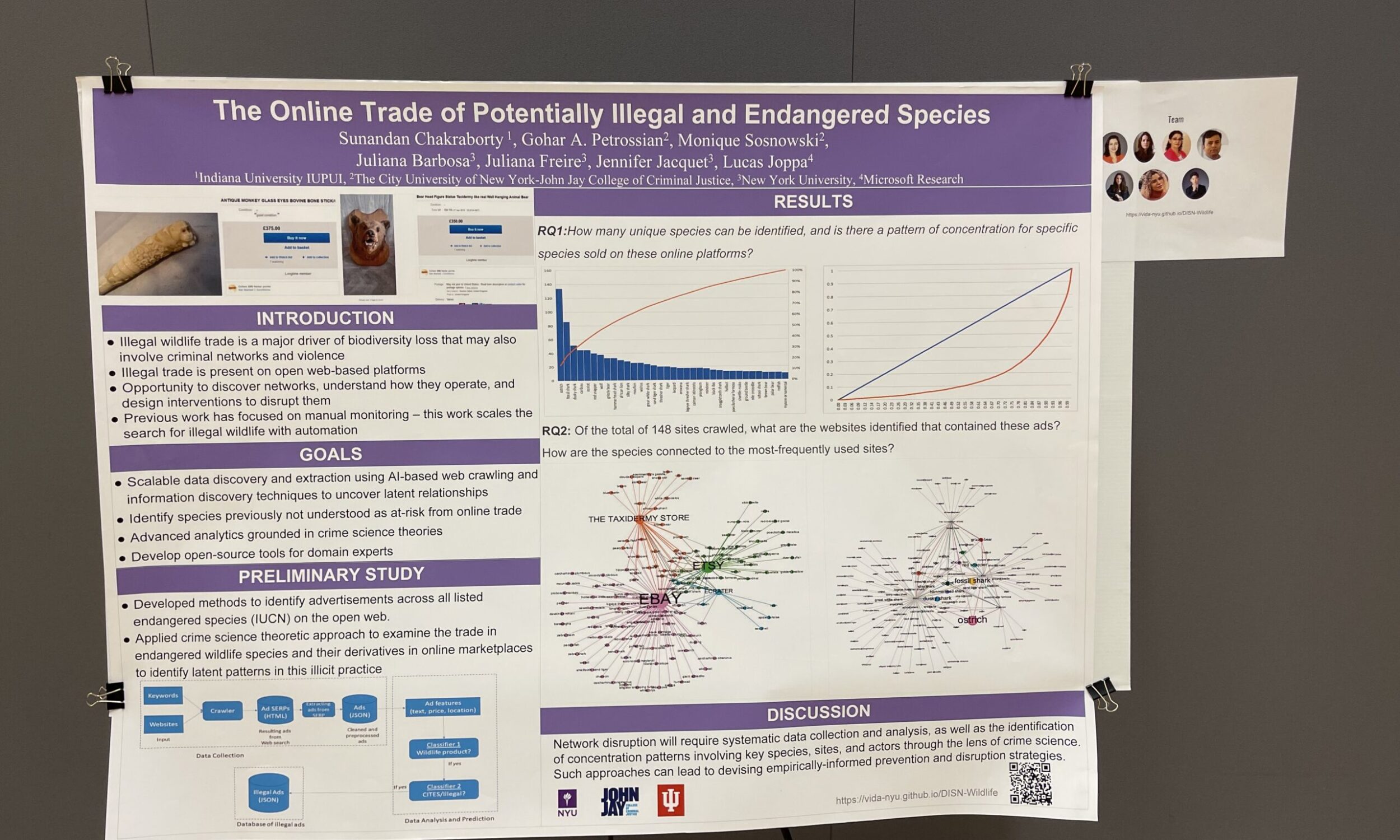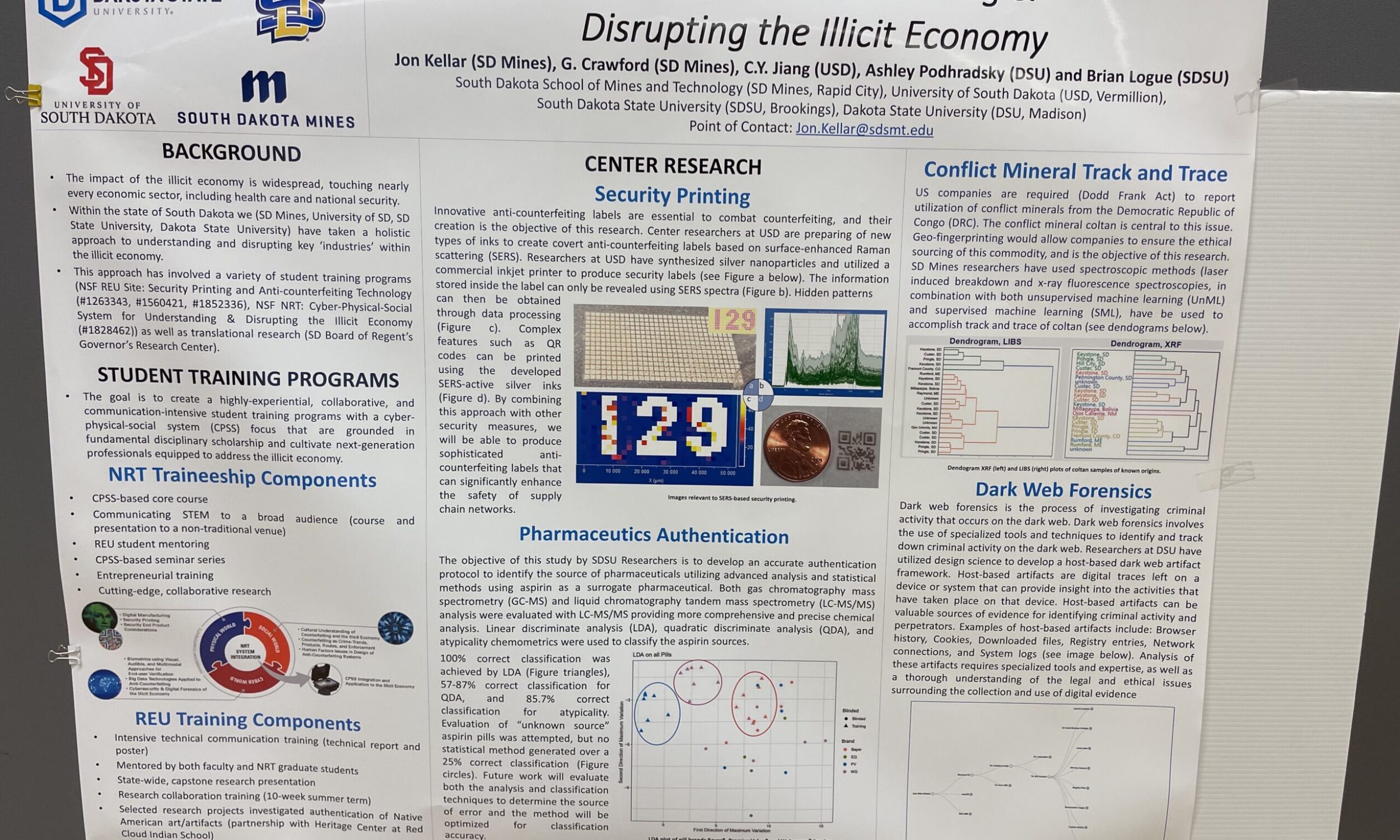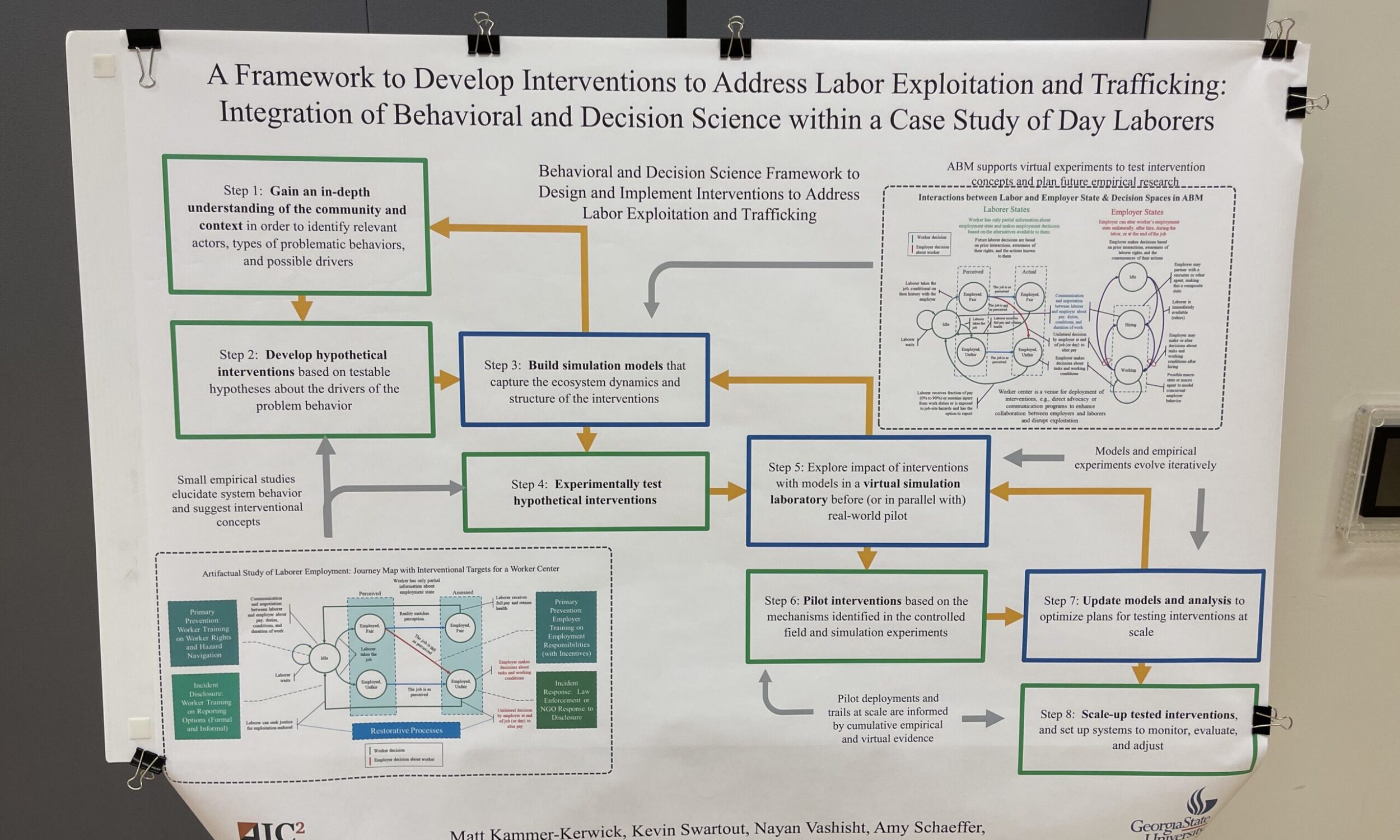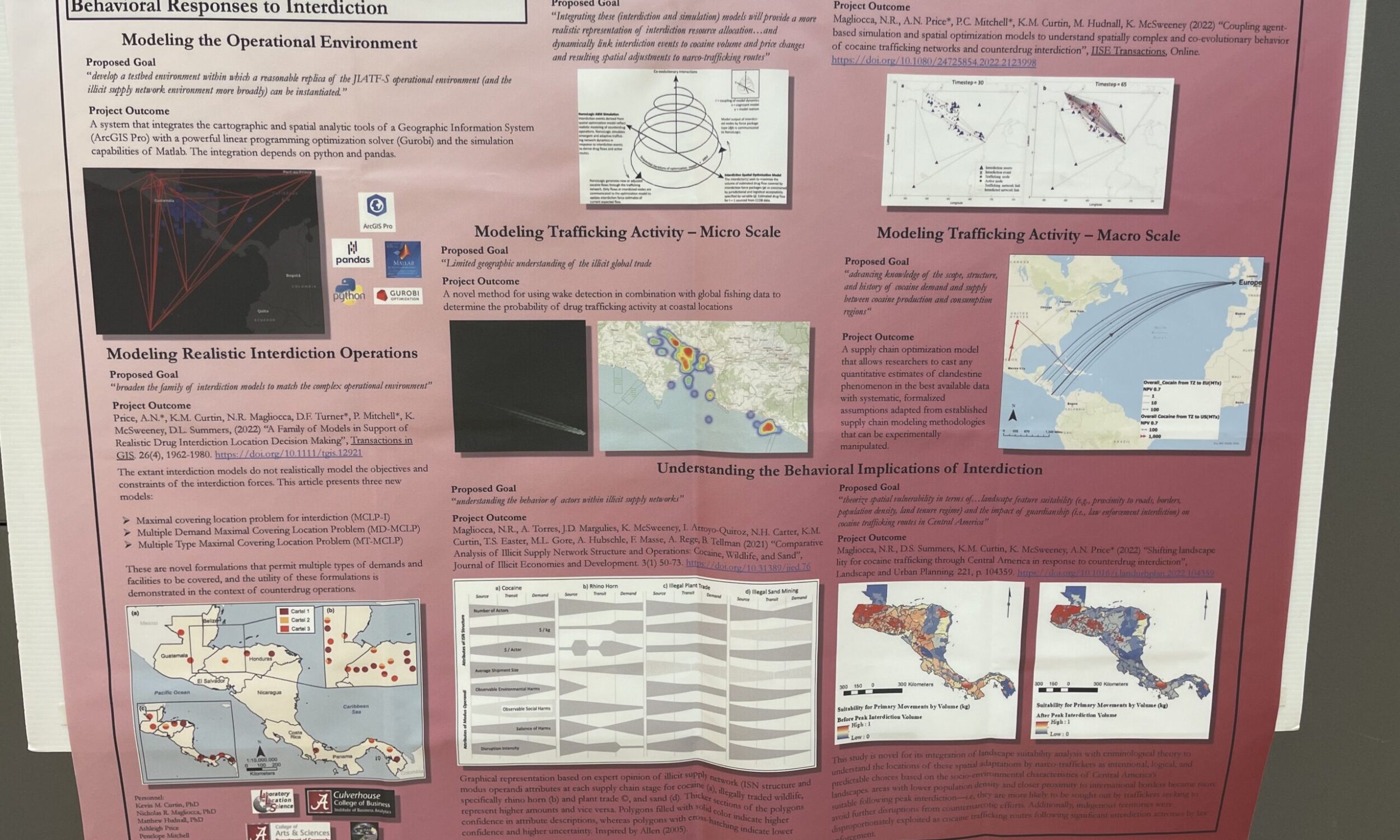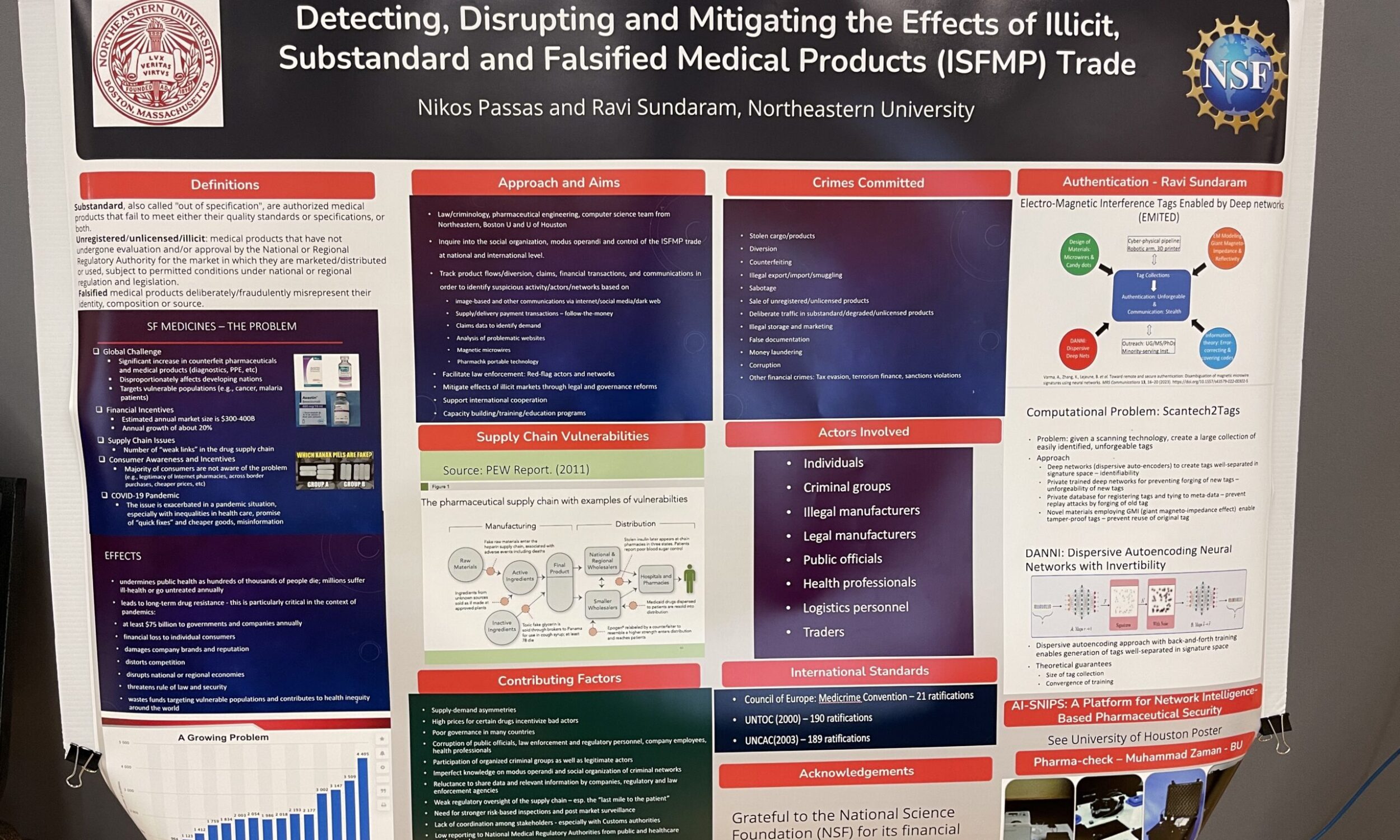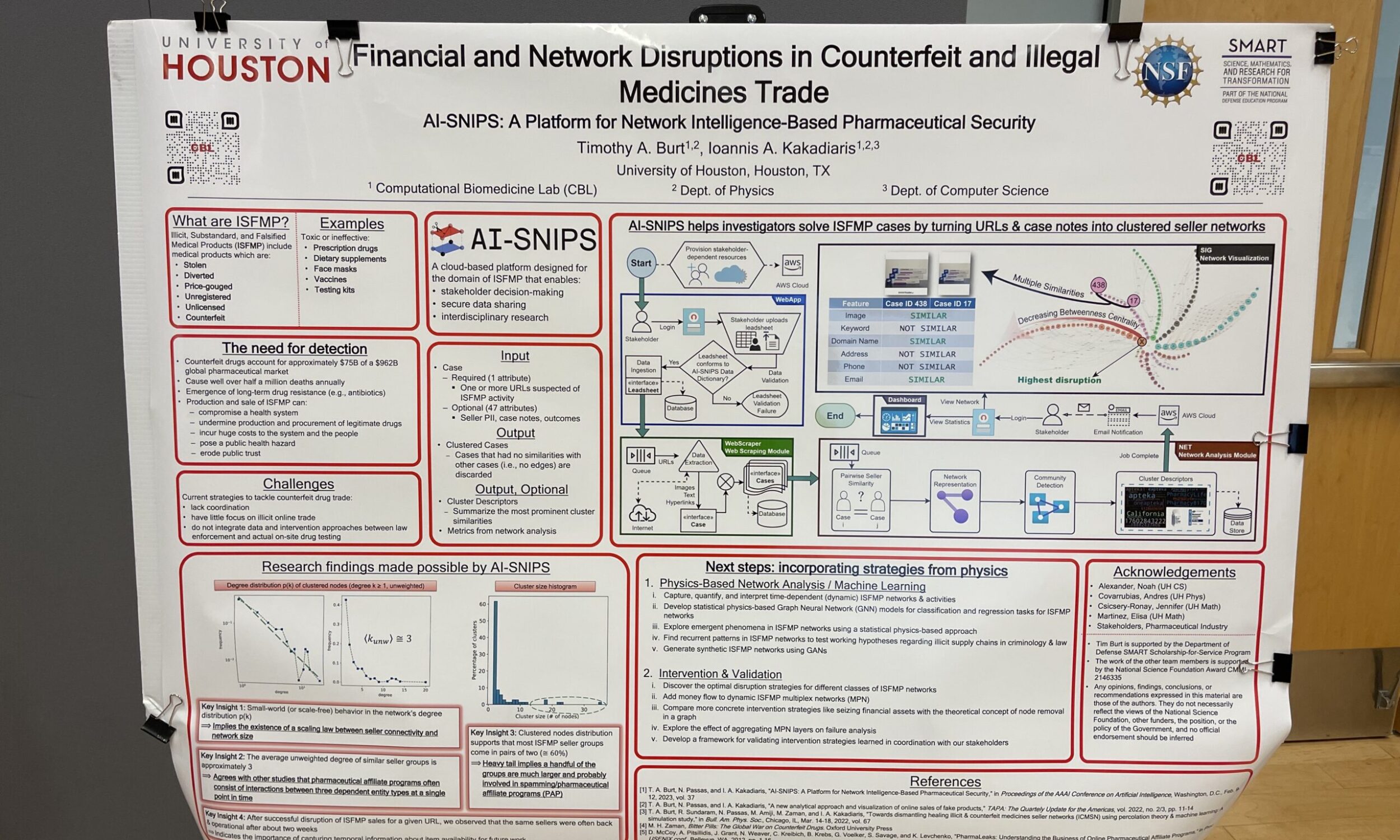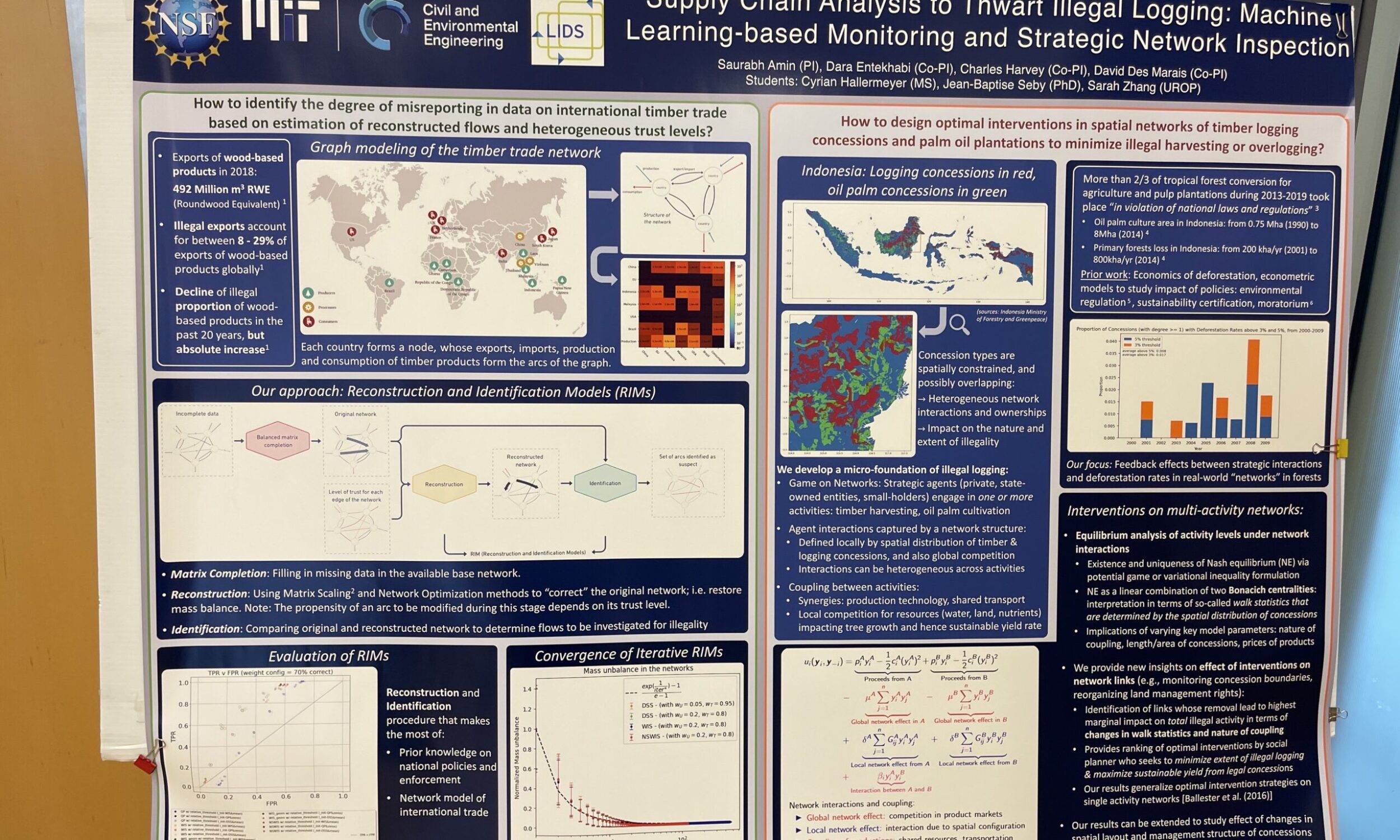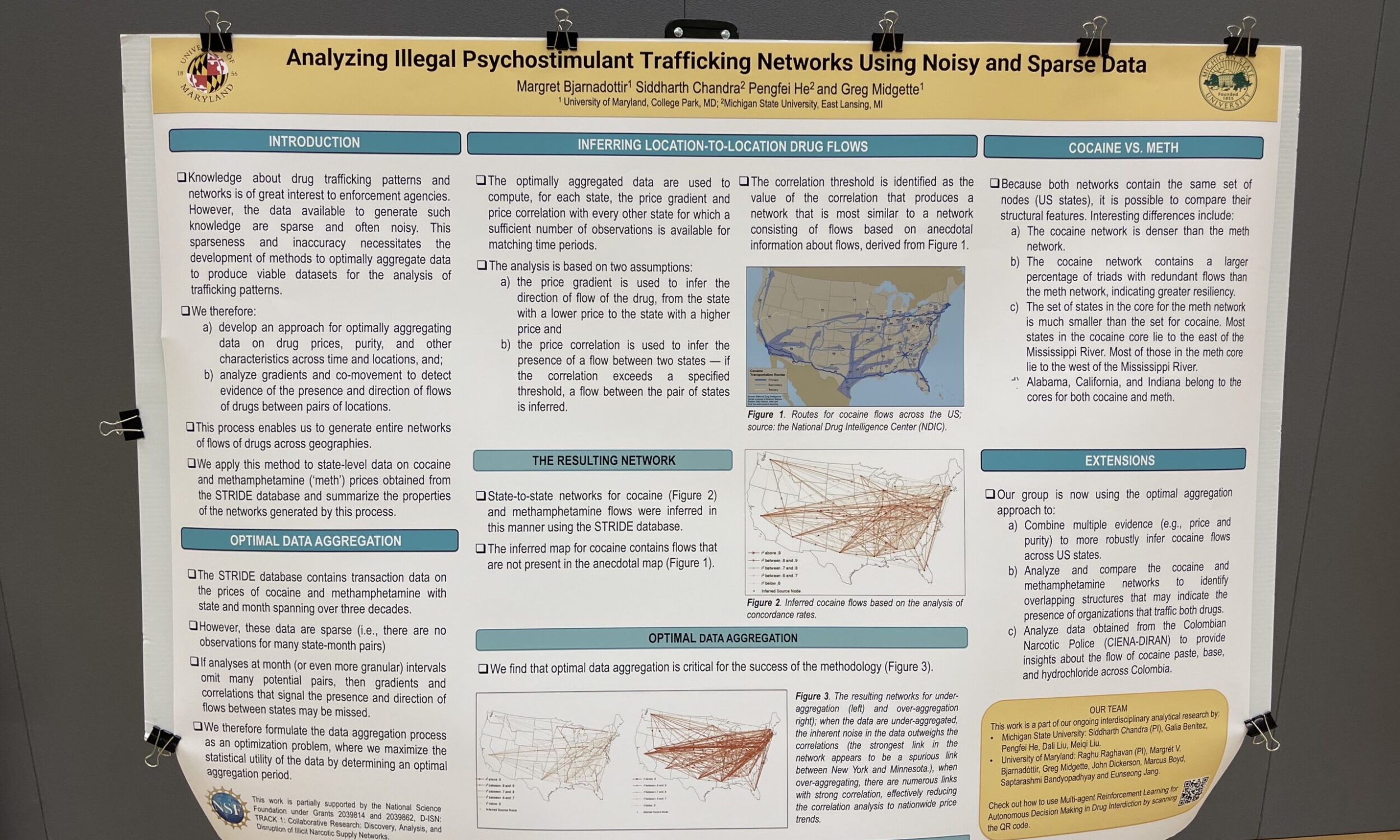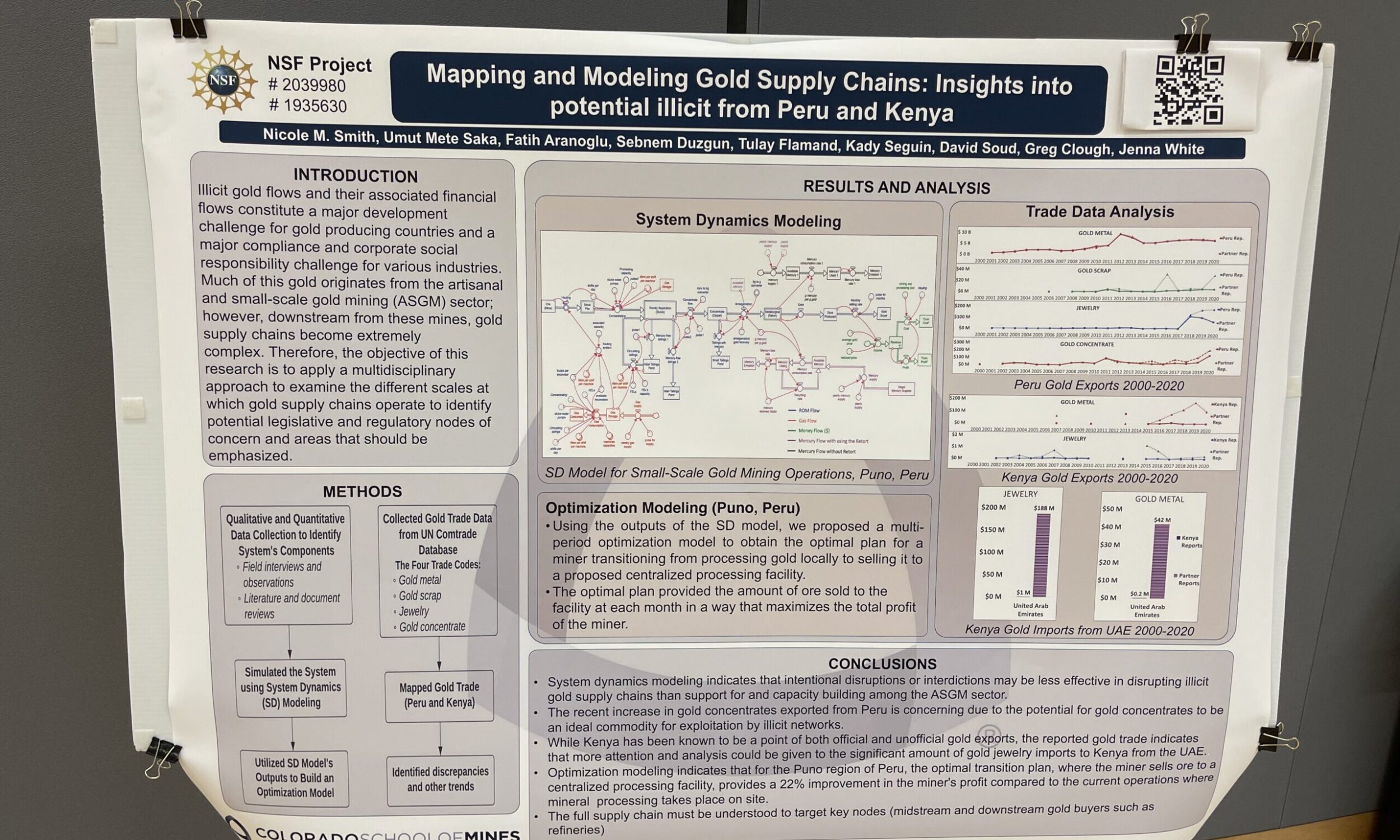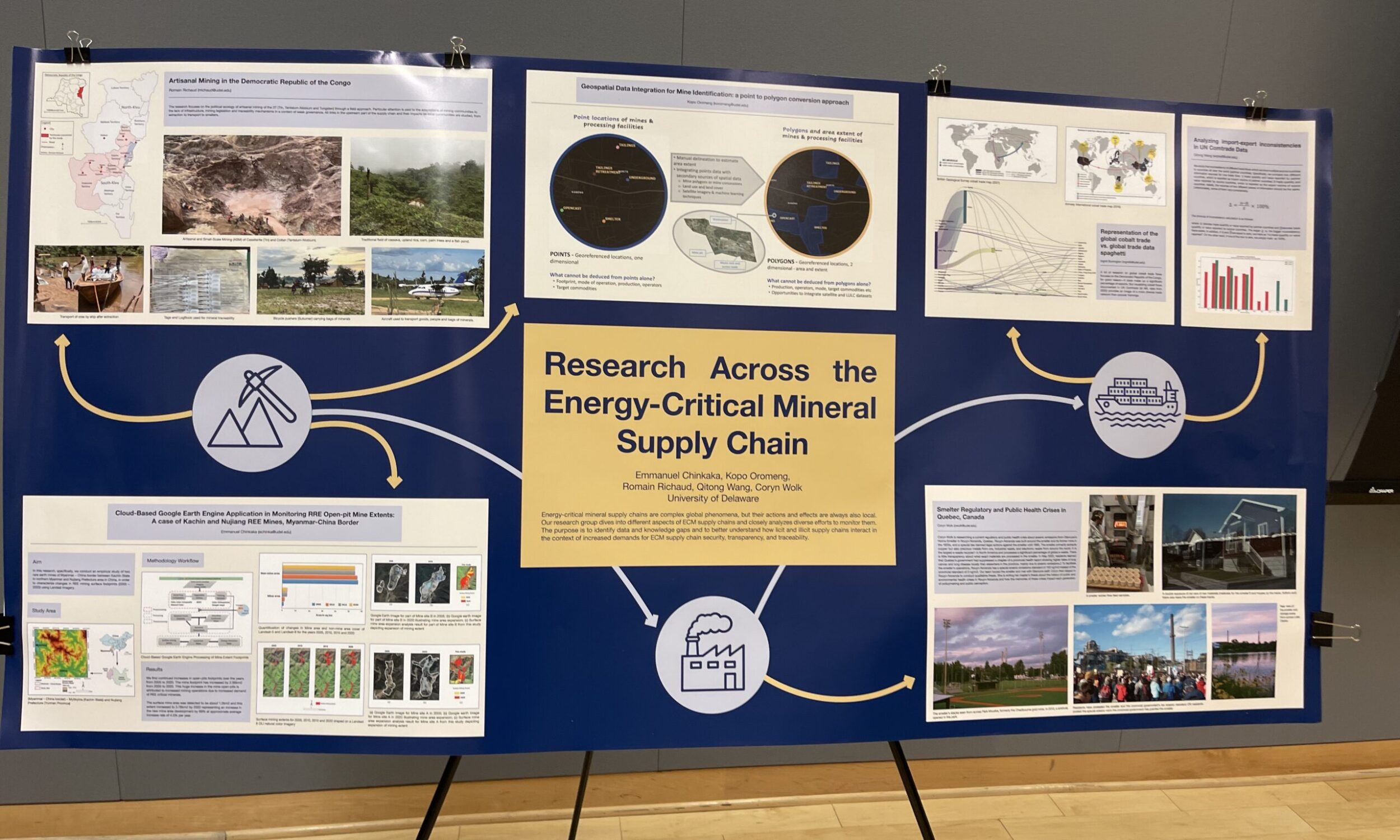Posters
Human Trafficking
The sessions on human trafficking (1A and 2A) included subject matter experts from the U.S. Department of Labor, a human-trafficking NGO, and researchers from academia. The following details the findings, recommendations, and future research directions identified in each panel session.
Major findings, recommendations, and future research directions
- Integration of Healthcare Approaches: Utilize healthcare frameworks to educate and assist human trafficking victims, emphasizing the importance of respectful engagement and increased intervention points. Future research should explore the effectiveness of these approaches in various settings.
- Data Collection Improvements: Enhance national and international frameworks for collecting data on human trafficking, with a focus on minors and vulnerable populations. This includes overcoming legal barriers like HIPPA provisions and promoting collaboration among federal departments.
- Use of Technology for Intervention: Explore the use of satellite technology and other innovative tools to identify and intervene in human trafficking situations, considering ethical implications and the dynamic nature of trafficking networks.
- Interdisciplinary and Participatory Research: Encourage interdisciplinary approaches and participatory research that involve survivors and field practitioners, aiming to co-create solutions and build evidence bases for interventions.
- Understanding Trafficking Dynamics: Investigate the connections between different types of trafficking and the common technologies or methods used, with a focus on socio-economic determinants of health and exploitation.
- Addressing Supply and Demand: Focus on disrupting both the supply and demand sides of trafficking, considering the motivations and decision-making processes of traffickers, and the need for interventions at the family level and beyond.
- Ethical Considerations in Research: Emphasize the ethical considerations in trafficking research, including the potential for retraumatization of human subjects and the importance of co-creation and minimum standards of care for victims.
- Collaborative and Transdisciplinary Teams: Leverage the strengths of collaborative and transdisciplinary teams to address the complex problem of human trafficking, valuing different perspectives and expertise equally.
- Modeling and Simulation: Utilize models and simulations to understand trafficking operations and develop intervention strategies, ensuring these models account for the needs and preferences of those involved in trafficking situations.
- Systems Thinking in Interventions: Adopt a systems thinking approach to view interventions as part of a larger system, focusing on capacity building for local NGOs, researchers, and considering the cost-effectiveness of anti-trafficking interventions.
Arms/Drugs/Other Trafficking
The sessions on arms/drugs/other trafficking (1B and 2B) included subject matter experts from and NGO, an AI corporation, and academic researchers. The following details the findings, recommendations, and future research directions identified in each panel session.
Major findings, recommendations, and future research directions
- Data Access and Quality: Address the challenges of obtaining quality data on trafficking, especially concerning the purity of drugs like cocaine. Research should focus on improving data collection methodologies and ensuring data is timely and consistent for effective predictive modeling.
- Data Sharing Coalitions: Form coalitions for data sharing to overcome the decreasing public availability of trafficking data. This involves academia, government, NGOs, and other organizations working together to share observational data and insights, despite challenges posed by privacy protection laws.
- Funding Allocation Based on Research: Reevaluate the allocation of funds in combating crime networks, particularly in drug trafficking. Future strategies should be backed by research that understands the changing structure of trafficking networks, from hourglass to pyramid shapes, to ensure more effective use of resources.
- Interconnections with Other Crimes: Investigate the convergence of wildlife trafficking with other crimes and its complex impact on both human and natural systems. This includes understanding the second and third-order impacts and the socio-economic consequences of conservation efforts on local communities.
- Economic Opportunities and Awareness: Address the lack of economic opportunities and underdevelopment that contribute to the perpetuation of trafficking. Research should also focus on raising awareness about the cascading effects of crimes against nature to inform more holistic intervention strategies.
- Ethical and Quick Interventions: Develop ethical guidelines for interventions that consider the slow and complicated processes due to privacy laws and one-directional information flows. The goal is to enable quicker and more effective responses to trafficking incidents.
- Model Adaptation for Wildlife Trafficking: Recognize that wildlife trafficking presents unique challenges that current models for other crimes do not adequately address. Future research should develop new models or adapt existing ones to better capture the dynamics of wildlife trafficking.
- Community Impact Consideration: Take into account the impact of anti-trafficking measures on local communities, especially those living near protected areas. Research should explore the socio-economic implications of displacement and other conservation strategies to avoid exacerbating local hardships.
- Holistic Approaches to Trafficking: Encourage holistic approaches to understanding and combating trafficking that integrate various dimensions, including economic, ecological, and social factors. This multidisciplinary perspective can lead to more comprehensive and sustainable solutions.
Illicit and Dark/Deep Web Trading
The sessions on arms/drugs/other trafficking (1C and 2C) included subject matter experts from industry and academic researchers. The following details the findings, recommendations, and future research directions identified in each panel session.
Major findings, recommendations, and future research directions
- Network Formation and Self-Organization: Illicit networks form around masterminds familiar with the latest technologies, such as cryptocurrency. These networks often start with low-cost criminal experiments before scaling up, utilizing online forums for communication. Future research should explore the transition from loose affiliations to corporate structures within these networks.
- Detection of Illicit Networks: Leveraging AI and various data analysis methods, including “purchase pair” techniques and blockchain analysis, can enhance the detection of illicit networks. Research should continue to develop innovative detection methods, focusing on both digital and physical tracking to understand the operational systems of these networks better.
- Disruption Strategies: Disrupting illicit networks involves targeting key intermediators, increasing the risk and cost of counterfeiting, and pressuring financial institutions for better self-policing, especially regarding cryptocurrencies. Future strategies should also consider the trade-off between privacy culture and illicit network growth, exploring regulatory changes that could inhibit illegal activities.
- Illicit Trade Estimates: Skepticism exists around the accuracy of current estimates of illicit trade’s global impact. More precise methodologies are needed, particularly in sectors like minerals, pharmaceuticals, and counterfeit parts/materials. Research should focus on improving data accuracy and leveraging private sector insights for more reliable estimates.
- Regulatory Interventions: Calls for diverse, complex solutions to address the challenges posed by illicit and dark/deep web trading. This includes enhancing supply chain visibility, fostering collaborations across sectors, and employing advanced technologies like blockchain for tracking and enforcement. Future research should investigate the effectiveness of these regulatory interventions and explore innovative solutions.
- Resource Allocation: Given the scarcity of resources, strategic prioritization is necessary. Research should identify high-impact areas for intervention, such as cross-border sales of certain goods, to maximize the effectiveness of limited resources in combating illicit networks.
- Consumer Education and Awareness: Educating consumers about illicit trafficking and the risks associated with counterfeit products can influence both research interests and consumer habits. Future initiatives should focus on collaboration with platforms to disseminate information and empower consumers to make informed decisions.
- Digital Platform Accountability: The persistent nature of platforms facilitating illicit trade presents a significant challenge. Research should explore ways to disrupt the transition from dark to pseudo-licit platforms and address the digital exhaust bottleneck, aiming for solutions that mitigate the scalability of cybercrime.
Financial Fraud/Money Laundering
Session 1D covered the topic of Illicit Financial Transaction & Cybersecurity and included panelists from U.S. government agencies, the United Nations, and academia. The following details the findings, recommendations, and future research directions identified in the panel session.
Major findings, recommendations, and future research directions
- Emerging Trends: The rise of virtual assets, precious stones, metals, and environmental crimes requires focused attention. Collaboration with designated professions and the private sector is crucial to combat these emerging forms of financial fraud and money laundering.
- Broadening Regulatory Focus: Moving beyond traditional regulatory obligations of financial institutions to include supply chains, facilitators, and bad actors can enhance national security. Research should explore the implications of this broader focus and its impact on the effectiveness of anti-money laundering (AML) laws.
- Data Integration Challenges: The financial sector faces significant hurdles in integrating information due to siloed data resources. Efforts should be made to map the financial sector more comprehensively and invest in solutions that facilitate data sharing while maintaining privacy.
- Data Access and Privacy Regulations: Accessing data, especially from social media companies, poses challenges for international cooperation. The US’s outdated privacy laws complicate data sharing. Future research and policy work need to address how to update these regulations to reflect technological advancements without compromising individual privacy or pushing people out of the formal financial system.
- Ethical Considerations in Data Use: Distinguishing between “publicly available” and “legally publicly available” data raises ethical concerns in financial investigations. Clear guidelines and ethical standards are needed to navigate this complex landscape.
- Legislative Challenges: The complexity of writing or amending laws, especially those affecting international supply chains, presents significant challenges. Research should focus on developing multidisciplinary regulatory frameworks that consider all stakeholders and jurisdictions involved.
- Communication with Policymakers: Effective communication of complex financial fraud and money laundering issues to policymakers is essential for the development of effective policies. Strategies to improve this communication could enhance policymakers’ understanding and lead to more targeted and effective legislation.
Work Dissemination and Broader Outreach
Session 2D covered the topic of best practices to broaden impacts media outreach. The panel included experts from academia, professional organizations, and NSF. The following details the findings and recommendations.
Panel recommendations
- Preparation and Packaging: Ensure your academic work is accessible and ready for reporters, who often operate under tight schedules and resource constraints. Packaging your research in an easy-to-understand format can maintain their interest.
- Engagement with Media Cycles: Regularly engage with current news and media cycles. Reporting on peers’ work and contributing op-eds related to your research or topical issues can increase visibility. Utilize tools like Google Alerts to monitor the reception of your op-eds and identify timely opportunities for contribution.
- Content Accessibility: Simplify the presentation of your research to make it comprehensible to lay audiences, avoiding jargon and overly technical language. Conciseness and clarity can help capture and retain the audience’s interest.
- Building Relationships: Develop and maintain relationships with reporters and media personnel. Establishing rapport can lead to ongoing opportunities for coverage and ensures that your work is recognized for its quality.
- Network Utilization: Leverage existing connections for networking opportunities, potentially leading to more platforms for publishing your work. Remember that even experts in your field may not be familiar with all aspects of your research, so introduce your work broadly.
- Op-Ed Strategies: When pitching and writing op-eds, prioritize brevity and impact. Stay informed about current events to align your contributions with the news cycle, maximizing the relevance and engagement of your work.
- Inspiration and Accessibility: Aim to inspire with your research by making it accessible and engaging. Highlight the novel, unique, or first-time aspects of your work to pique interest. Consider the potential for multimedia to enhance engagement.
- Consistent Engagement: Maintaining momentum in media outreach requires consistent effort. Building and sustaining relationships with media professionals, including informal interactions, can facilitate ongoing coverage and collaboration.
In summary, the recommendations focus on strategic packaging, effective Op-Ed utilization, engaging with the news cycle, enhancing accessibility, exploring multimedia potential, and maintaining strong relationships through networking.
Conclusions
Across the diverse sessions on Human Trafficking, Arms/Drugs/Other Trafficking, Illicit and Dark/Deep Web Trading, and Financial Fraud/Money Laundering, several overarching challenges and concerns consistently emerge, highlighting the intricate and interconnected nature of these issues. A primary challenge identified across all sessions is the difficulty in obtaining high-quality, timely data, which is compounded by legal barriers, privacy concerns, and the siloed nature of data resources. This issue hampers efforts to comprehensively understand the scope of illicit activities and develop effective interventions.
The potential of innovative technologies, such as satellite imagery, AI, and blockchain, was noted as a promising avenue for identifying and disrupting illicit networks. However, the adoption of these technologies is not without its challenges, including ethical considerations and the need for robust regulatory frameworks to guide their use responsibly. Furthermore, the sessions underscored the importance of interdisciplinary and participatory research, advocating for collaboration among academia, government, NGOs, the private sector, and affected communities. This collaborative approach is essential for unraveling the complex dynamics of trafficking and financial crimes and co-creating impactful solutions.
Regulatory and legislative challenges were also highlighted, pointing to the necessity for updated frameworks and legislation that reflect the current technological landscape and the transnational nature of illicit activities. These challenges include integrating data across borders, modernizing privacy laws, and ensuring that laws are effective without excluding individuals from the formal financial system. Ethical considerations in data use and research methodologies emerged as a critical concern across the discussions, emphasizing the need for clear guidelines and standards to prevent harm to affected individuals or communities.
Effective communication with policymakers was identified as crucial for translating research findings into actionable policies. The complexity of issues like human trafficking and financial fraud requires that they be conveyed in a manner that is accessible and actionable for policymakers. Additionally, the role of consumer education and awareness was acknowledged, highlighting the impact of initiatives that empower consumers to make informed decisions and reduce the demand for illicit goods and services.
Lastly, given the limited resources available to combat these issues, the need for strategic prioritization and resource allocation was evident. Identifying high-impact areas for intervention can enhance the efficacy of efforts against illicit networks. Addressing these challenges demands a concerted, multidisciplinary effort that leverages cutting-edge technologies, fosters cross-sector collaboration, and places a strong emphasis on ethical considerations and consumer education.

